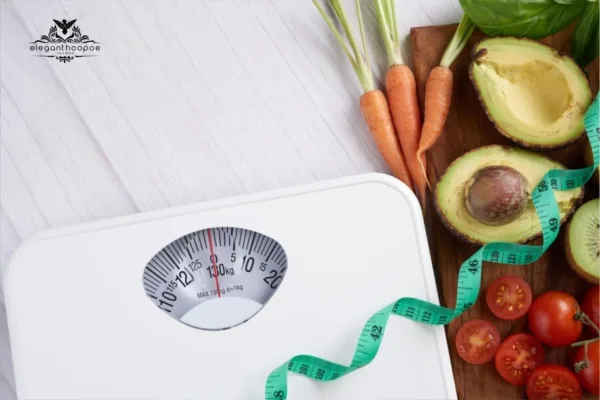What Fruits Should You Avoid for Weight Loss? The Truth About High-Sugar & Caloric Choices
Trying to lose weight but unsure if some fruits are sabotaging your progress? While no fruit needs to be completely avoided, moderation is key for those high in sugar and calories. Consider limiting:
- Avocados & Coconuts – High in healthy fats but calorie-dense.
- Dry Fruits & Grapes – Packed with sugar due to low water content.
- Bananas & Mangoes – Naturally sweet but best consumed in portioned servings.
- Pineapples – Lower sugar but acidic, which may affect digestion.
Balance is essential—these fruits still offer vital nutrients, so mindful consumption is the best approach!
According to recent UAE food-based dietary guidelines published by the College of Health Sciences, University of Sharjah, daily adult diets should contain 2-3 servings of fruits. No exact fruit is recommended or excluded, which suggests complete dietary freedom across the board. In this blog post, we analyze the nutritional profile of 7 popular fruits with high sugar and/or calorie content and debunk the myth that those pursuing weight loss should steer clear of these fruits.
Introduction: Fruits & Weight Loss

Fruits have been a stable human diet for as long as humans have existed. They are replete with vitamins and minerals and also contain a wide range of antioxidants that neuters environmental harm and supports the health of critical organs, like the heart and brain. These benefits, when juxtaposed with its (mostly) low fat and positively high fiber/ protein content, seemingly position fruits as a daily ‘must-eat’, if only for nutritional reasons.
However, not all fruits are created equal. Certain fruits have a disproportionately high number of calories and natural sugar, prompting many researchers to question their weight loss credentials. Many have theorized that eating these fruits equates to weight gain and is effectively an own goal in weight management. These assertions, although seemingly fact-based, do not give sufficient importance to the very low calorie-to-nutrient and sugar-to-nutrient ratio packed in.
Balancing Fruit Intake for Weight Loss Purposes
In many cases, the overall nutritional density of fruits compensates for the calories/ sugar drawbacks and there are enough in-built natural safeguards to protect your health in the long-term, especially concerning its sugar content. Most fruits contain a lot of fiber which helps to prevent blood sugar spikes that will occur with the equivalent quantity of refined sugars, and similarly have a low glycemic index which balances blood sugars and helps the body to more efficiently access and burn stored fat.

So, while calorific or sugar moderation purposes may have you limit or become more mindful of your intake of the fruits on this list, their outsized role in nutritional health means that they should not be avoided altogether. For more healthy eating tips, check out our section on the healthy broccoli recipes for weight loss.
Avocados
Avocados contain about 160 Cal per 100 grams, which is much higher than the latter fruits on this list. Although it does contain healthy monounsaturated fat that helps with satiety and balances blood sugar levels, the excessive calories are not ideal for weight loss and maintenance goals – when eaten regularly.
As per the United States Department of Agriculture (all nutritional profiles on this post are gotten from this source and are for medium-sized portions of each fruit), a medium-sized avocado contains:
- Carbohydrate, 8.53 grams by difference
- Calories, 160 per 100 grams
- Protein, 2 grams
- Total fat, 14.7 grams (the bulk of which is monounsaturated)
- Total dietary fiber, 6.7 grams
- Total sugars, 0.66 grams
- Sodium, 7 milligrams
The protein and (relatively high) fiber content have a plethora of digestive benefits, that include the enhancement of satiety. Avocados also contain high amounts of carotene – an antioxidant that protects the skin from UV radiation and reduces symptoms of cognitive decline.
Coconut
Coconut contains excessively high amounts of calories (354 per 100 grams) and ‘bad’ fat, a sticking point in researches that have linked coconut to increased cholesterol levels, the precursor of many heart-related diseases.
- Calories, 354 per 100 grams
- Total fat, 33g
- Sodium, 20 mg
- Potassium, 356 mg
- Total carbohydrate, 15 g
- Dietary fiber, 9 g
- Sugar, 6g
- Protein, 3.3 g
It’s not all doom and gloom with coconuts though. They contain significant amounts of sodium that helps to maintain body fluid balance and blood pressure; in addition to incredibly high amounts of potassium, which is vital for synthesizing proteins and metabolizing carbohydrates. Across many coconuts, the high potassium can however add up to cause a slew of side effects like nausea and diarrhea.
Dry fruits

Dry fruits pack a similar number of calories per 100 grams to coconuts but are comparatively much lower in fats. Their sugar level, however, is nearly nine times that of a similarly-sized coconut as the lower water content markedly increases the concentration of natural sugars. Dietary fiber is also notably absent in many dry fruits.
- Calories, 359 per 100g
- Total fat, 2.7 g
- Saturated fat, 0.7 g
- Sodium, 403 mg
- Potassium, 164 mg
- Total carbohydrate, 83 g
- Fiber, 0g
- Sugar, 58 g
Banana
Although possessing significantly lesser sugar content than dry fruits, bananas still pull in around twice the sugar content of coconuts with comparable potassium levels. The sugar content however varies with the ripeness of the banana, with green bananas known to have lower levels of sugar. Green bananas are also high in resistant starch which paradoxically, is good for weight loss.
- Calories, 89 per 100 grams
- Proteins, 1.1 grams
- Carbohydrates, 22.8 grams
- Sugar, 12.2 grams
- Fiber, 2.6 grams
- Fat, 0.3 grams
- Potassium, 358 mg
- Sodium, 1 mg
Notably, bananas (even the ripe ones) have a good glycemic index. They also provide near-immediate calorie release, making them a preferred in-game choice for physical and mental athletes. Moreover, bananas contain catechin, an antioxidant that reduces the risk of heart disease.

Mango
Mangoes, like bananas, contain high natural sugars with slightly fewer calories (but more hidden calories to boot). Like most fruits, mangoes also contain a commingling of vital vitamins, minerals, and antioxidants which enhances its nutritional density and pegs the fruit in essential territory.
- Calories, 60 per 100 g
- Total fat, 0.4 grams
- Sodium, 1 mg
- Potassium, 168 mg
- Total carbohydrate, 15 g
- Fiber, 1.6 g
- Sugar, 14 g
- Protein, 0.8 g
Grapes
Besides dry fruits, grapes have the highest sugar content, punch for punch, of all the fruits on this list! Thankfully, it does have a good glycemic index, which positively influences the sugar spikes and insulin response. Portion controls are still necessary, especially for those with diabetes and insulin resistance.
- Calories, 67 per 100 grams
- Total fat, 0.4 g
- Sodium, 2 mg
- Potassium, 191 mg
- Total carbohydrate, 17 g
- Fiber, 0.9 g
- Sugar, 16 g
- Protein, 0.6 g
It’s worth noting that grapes are rich in two key antioxidants: resveratrol, which has anti-inflammatory properties, and quercetin, which aids coronary health. They also provide a good source of hydration, even if the relatively infinitesimal fat, protein, and fiber content reduces the diet’s ‘bulk’ and may cause overeating and watery stool.
Pineapples
At similar sizes, pineapples have a slightly lower sugar content than bananas, but are conspicuous by their high acidic content, making them unsuitable for those with sensitive stomachs or acid reflux issues. Like grapes, they also have minimal protein, fat, and fiber content.
- Calories, 50 per 100 g
- Total fat, 0.1 g
- Sodium, 1 mg
- Potassium, 109 mg
- Total carbohydrate, 13 g
- Fiber, 1.4 g
- Sugar, 10 g
- Protein, 0.5 g
Pineapples have high amounts of vitamin C and contain bromelain, an enzyme that aids glucose metabolism and insulin resistance.
Related Article: Before and after icoone laser treatments, users typically experience smoother, tighter skin and improved body contours.
Conclusion: The Role of Fruits in Weight Loss
The solution is a balanced diet, not necessarily food exclusion.
The fruits featured in this post, despite their high calorific/ sugar content and other drawbacks can still segue with the goal of most weight loss diets, which is to supply all the right nutrients while maintaining a calorie deficit. And with the nutritional benefits on offer, they have a role to play – no matter how moderate – even in the most stringent and regimented diets. If you are pursuing a weight loss program or have an underlying health condition, please work with your nutritionist, diet psychologist, or weight loss coach to figure out optimal portion sizes and food-fruit combinations for your health.





